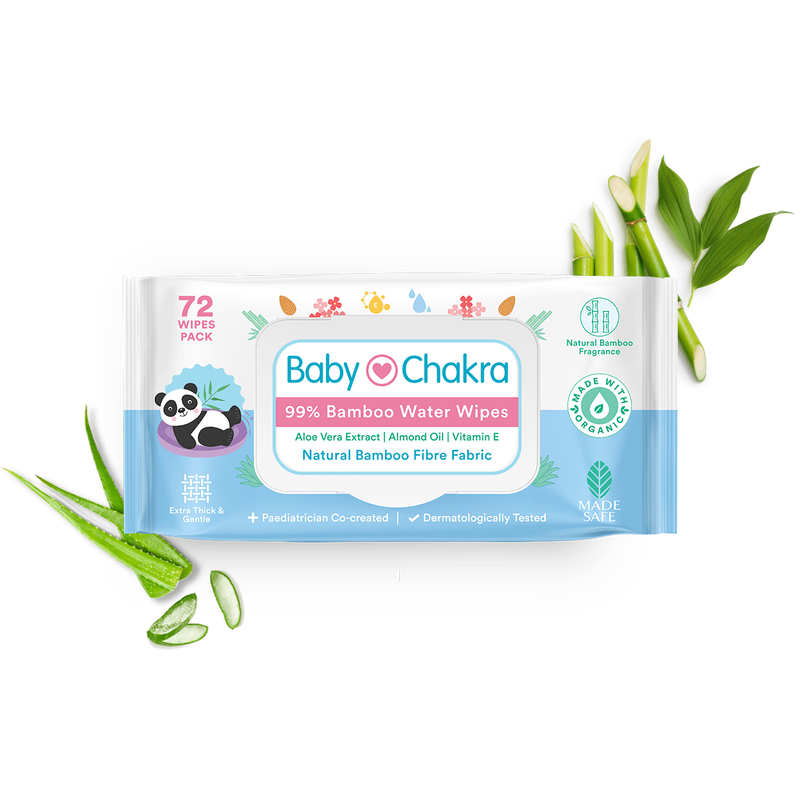
Priyanka Chopra Jonas Says Malti Marie Enjoys Lamb Chops: 9 Tips To Introduce Non-Veg Food In A Baby’s Diet
31 Mar 2023 | 5 min Read
Manisha Pradhan
Author | 1053 Articles
Introducing your baby to solid foods is an exciting milestone in your little one’s life. That’s why celebrity mum Priyanka Chopra Jonas shared the exciting news of her daughter Malti Marie Jonas being a foodie.
In a podcast called ‘Armchair Expert’ with Dax Shepherd Priyanka Chopra spoke about her daughter’s love for food. She said, “Yesterday, she started doing this new thing where whenever she is loving her food, she sings ‘mmmmm’.”

“She is discovering new foods. She eats everything like lamb chops and roti,” she added. However, many parents how to introduce non-veg food to a baby’s diet. We’ve listed some tips to help you introduce non-veg food in a baby’s diet.
Before we get into the nitty-gritty of when and how to introduce non-veg food, let’s understand why it’s important to do so.
Why Introduce Non-Veg Food In A Baby’s Diet?
Protein is an essential nutrient that helps build and repair tissues in the body. Non-veg food such as chicken, fish, and eggs are excellent sources of protein. Apart from protein, non-veg food is rich in iron, vitamin B12, and omega-3 fatty acids that are crucial for a baby’s growth and development.
When Can I Introduce Non-Veg Food In A Baby’s Diet?
Well, the American Academy of Pediatrics recommends introducing non-veg food into your baby’s diet after your baby has been introduced to a variety of fruits, vegetables, and grains, usually around six months of age.
It’s important to note that every baby is different, and some babies may be ready to try non-veg food earlier, while others may not be ready until they are older. As a parent, you know your baby best, so trust your instincts and watch for signs that your baby is ready for non-veg food.
How Can I Tell If My Baby Is Ready To Try Non-Veg Food?
Here are some signs that your baby may be ready to try non-veg food:
- Your baby can sit up without support and has good head control.
- Your baby has started showing interest in the food you eat.
- Your baby has doubled their birth weight and weighs at least 13 pounds.
- Your baby has lost their tongue-thrust reflex and can move food to the back of their mouth and swallow it.
Once you’re sure that your baby is ready to try non-veg food, it’s essential to introduce them one at a time. Start with small amounts and watch for any signs of an allergic reaction. If your baby has any allergies or a family history of allergies, it’s best to consult a paediatrician before introducing non-veg food into a baby’s diet.
9 Tips To Introduce Non-Veg Food In A Baby’s Diet
Here are some tips to keep in mind when introducing non-veg foods to your baby’s diet:
1. Start with chicken or fish
These are great sources of protein and are easy to digest. You can begin by offering small pieces of boiled or baked chicken or fish.
2. Avoid processed meat
Processed meats such as sausages, bacon, and hot dogs are high in sodium and preservatives. They’re not suitable for your baby’s delicate digestive system.
3. Cook thoroughly
Make sure the non-veg foods are cooked thoroughly to prevent any bacterial infections.
4. Avoid giving raw or undercooked eggs
Raw or undercooked eggs can cause salmonella infection, which can be dangerous for your baby.
Introduce one food at a time: Introduce one non-veg food at a time and wait for a few days before introducing another. This will help you identify any allergic reactions or food intolerances.
5. Offer variety
Once your baby has tried chicken or fish, you can introduce other non-veg foods such as beef, lamb, or turkey. Offer a variety of non-veg foods to provide your baby with a range of nutrients.
6. Pay attention to your baby’s cues
Your baby will let you know if they like or dislike a particular non-veg food. Don’t force your baby to eat something they don’t like. Offer a variety of options and let them choose what they prefer.
7. Keep it small
Your baby’s stomach is still small, so start with small portions of non-veg foods. Offer them along with other foods such as vegetables and grains.
8. Be patient
It may take a few tries for your baby to get used to the taste and texture of non-veg foods. Don’t give up if your baby doesn’t like it the first time. Keep trying, and they may surprise you by enjoying it.
9. Get creative
There are plenty of ways to prepare non-veg foods for your baby. You can bake, boil, grill, or steam them. You can also puree them or mash them into other foods such as mashed potatoes or vegetables.
Remember, introducing non-veg foods to your baby’s diet is not a race. Take it slow and steady, and don’t be afraid to ask your paediatrician for advice if you have any concerns.
If you are introducing non-veg foods to your baby’s diet just remember to take it slow, introduce one food at a time, and watch for any signs of allergies or intolerances. And if your baby doesn’t like a particular non-veg food, don’t worry, there are plenty of other options to try. Happy feeding!
You may want to try these natural products for your baby:
Also Read:
Guess What Ranbir Kapoor Gifted Daughter Raha?: 10 Baby Shower Gifts That Are Useful For Newborns
A


Related Topics for you
Suggestions offered by doctors on BabyChakra are of advisory nature i.e., for educational and informational purposes only. Content posted on, created for, or compiled by BabyChakra is not intended or designed to replace your doctor's independent judgment about any symptom, condition, or the appropriateness or risks of a procedure or treatment for a given person.


